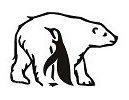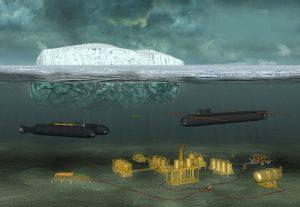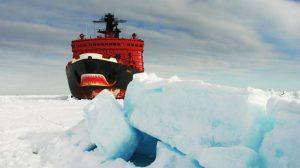
Alexander Sokolov and walruses
Why did the walruses choose this place
The deputy told about modern research of Arctic animals and new projects. Alexander Sokolov, Director of the Arctic Research Hospital (Labytnangi) of the IERJ of the Ural Branch of the Russian Academy of Sciences:
– Together with colleagues from the Marine Mammals Scientific Expedition Center, we have been observing the walrus rookery in the area of Cape Tiutey-Sale, which is located on the western coast of the Yamal Peninsula, for several years. Last year, thanks to drone footage, we counted more than 4,100 animals that were there at the same time, and noted that the proportion of young individuals had increased.
The unique rhythm of the rookery was also recorded: once every 3-4 days it is filled with the maximum number of walruses. Satellite transmitters, which we supplied to some individuals, showed that most of them do not leave the waters of the Baydaratskaya Bay until the end of December. It can be assumed that the Yamal walruses belonging to the Atlantic subspecies are a fairly isolated group of animals, which was confirmed by toxicological and genetic studies.
In recent years, we have noted an increase in economic activity in the rookery area, however, thanks to operational cooperation with the Government of the Yamalo-Nenets Autonomous Okrug, serious negative consequences have so far been avoided. Nevertheless, we are convinced of the need to recognize the walrus rookery as a specially protected area of regional importance. This initiative is supported by the Government of the Yamalo-Nenets Autonomous District and mining companies.
The walrus rookery on Yamal is not just one or two hectares of coast, it is a system that has been developing for centuries. In the near future, we plan to involve a wider range of specialists in the study of this area, primarily hydrologists and oceanologists, in order to answer questions about why walruses chose this particular place. In October, another expedition will go to Cape Tiutei-Sale.
Gyrfalcons have chosen bridge crossings

The Gyrfalcon
For many years we have been studying gyrfalcons, the largest representatives of the falconid family. Gyrfalcons have chosen bridge crossings on the railway route “Ob – Karskaya” for nesting. According to our data, the number of nesting gyrfalcons on this railway doubled last year.
This year we are launching a new project, which is supervised by the All-Russian Research Institute of Ecology. Yamal and Kamchatka Krai have become pilot regions for studying the state of the gyrfalcon population in the country. Our first expedition within the framework of the new project took place in April. We visited the nesting sites of gyrfalcons in the Ural and Yamal regions, and in the summer we will return there to assess the breeding success.
Arctic fox

Arctic Fox
Another significant project is the Arctic Fox. This is the name of the Arctic fox, the most common predator of the Arctic. Since 2014, scientists have been working in the area of the Sabetta shift settlement in the north-east of Yamal. According to their data, despite the active presence of the industrial company, the abundance of arctic foxes here has not changed significantly since the 1980s.
Our second long–term field hospital in the south of Yamal – Yerkut, where we have been working since 1999. The high interannual amplitude of fluctuations in the main production of arctic foxes – lemmings and voles, periodic deaths in reindeer herds, providing additional food subsidies to scavengers, as well as the high mobility of arctic foxes, identified by us using satellite telemetry, complicate the assessment the absolute number of this predator in any given year.
In 2022, at the initiative of the Government of the Yamalo-Nenets Autonomous District, we developed for the first time a methodology for estimating the number of arctic foxes for the subzone of shrubby tundra on the peninsula, based on the data we have on more than 180 burrows, the coordinates of which we superimposed on landscape maps. This is how we obtained an extrapolated number of burrows in the study area.
Having found out the proportion of burrows occupied by Arctic fox broods in 2022, the average number of puppies in a litter, as well as the proportion of burrows inhabited by single Arctic foxes, we obtained for the first time reasonable values of the number of these animals in the subzone of the bush tundra of Yamal. In 2022, it amounted to about 4.5 thousand individuals. Thanks to landscape maps, we will actually be able to determine the annual number of Arctic foxes in a specific subzone in a specific year, including data from previous years.
By E. Ponizovkina


